
Lauca NP / © Matías Ballarini, Far South Exp
Northern Chile has the driest desert in the world, the inhospitable Atacama on the border with southern Peru and Bolivia and northwestern Argentina. This unique area is home to such diverse species as the huge, flightless Giant Coot, or the tiny Chilean Woodstar, and although it might seem like a barren, lifeless land, there is plenty of wildlife to find around if one looks in the right places. Its avian diversity in particular is spread between three main general environments: the Pacific coast and coastal valleys from sea level to a few hundred meters of altitude, then the foothills of the Andes at around 3,000m above sea level, with high valleys and ravines with scrub vegetation, what is known as the “pre-puna” zone, and finally the high Andean Plateau or Altiplano, with its lakes and bogs, around the 4,500m mark, a landscape of rarified air, huge snow-capped volcanoes, mirror-like lakes, bright light and freezing cold temperatures at night.

© Matías Ballarini, Far South Exp
This very diverse ecosystems are home to many interesting bird species, and one should spend at least several days in order to properly bird each of these areas in order to find some of the rarest and/or range-restricted specialties.
And this is exacly what we recently did with our team of Birding and Wildlife Photography guides, spending a week of the late Southern Winter travelling across the province of Arica & Parinacota, birding the different habitats and spots in these three main broad areas.
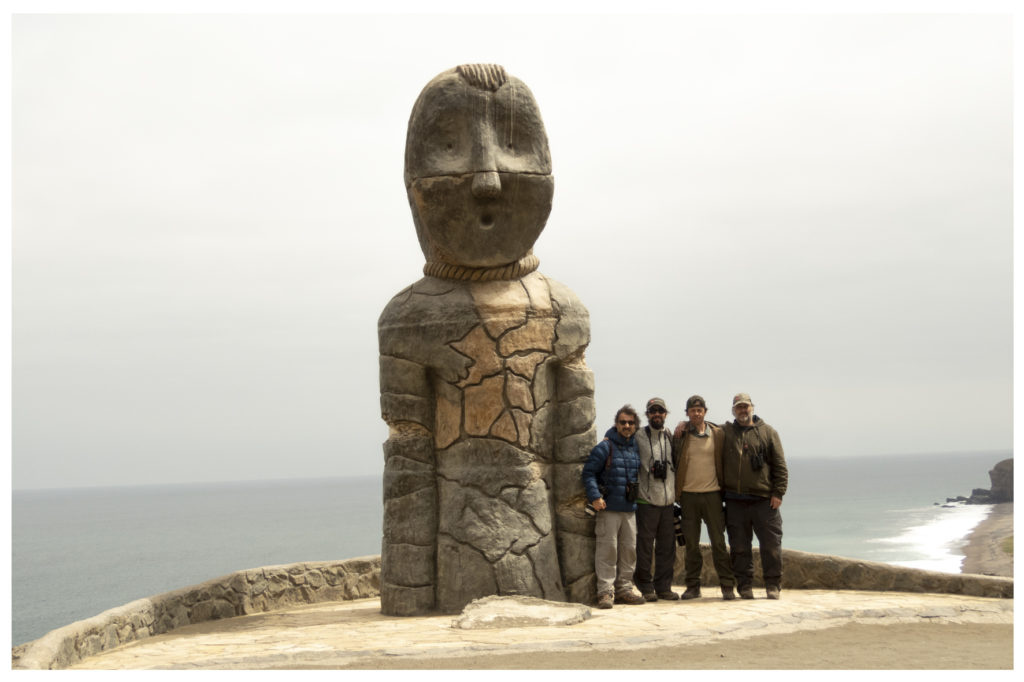
Camarones, Arica.
So we got ourselves on a north bound plane to the city of Arica, capital of the province. Located on the Pacific coast, Arica is Chile’s northernmost city, a place of beaches, river estuaries and coastal desert valleys, haunt of such specialties as Peruvian Thick-knee, Andean Swift, the critically endangered Chilean Woodstar and Slender-billed Finch, and as soon as we got off the plane and drove to the hotel we were spotting things like Grey Gull and Belcher´s Gull along the beach road. Our first birding spot to visit was the mouth of the Lluta River, a place rich in coastal seabirds, waders and waterfowl that just never ceases to produce vagrants and rarities. And this time around it certainly didn’t let us down, as we found an immature Puna (James’s) Flamingo, the rarest of South American Flamingos, feeding on one of the coastal ponds of the estuary, a rather unusual sighting especially in the coast, and a few other several species regular to the spot, such as Common Gallinule, Cinnamon Teal, Kildeer, Semipalmated Plover, Willet, American and Blackish Oystercatchers, Slender-billed Finch, Peruvian Meadowlark and Cinereous Conebill, all made their appeareances. In the afternoon we ventured inland to the East along the Lluta Valley, which produced Peruvian Thick-knee, race nanodes of Burrowing Owl, Andean Swift, Groove-billed Ani, Vermillion Flycatcher and Chestnut-throated Seedeater, among others. We then drove south along a rocky shore where we found lots of Peruvian Pelican, Kelp, Grey and Belcher´s Gulls and Willet, plus Ruddy Turnstone, Surfbird and a Peregrine Falcon. We finally drove back to the Lluta River mouth, where we found not one but two rarities for Chile, Tricoloured Heron and Least Tern, finishing the day in style, indeed..!
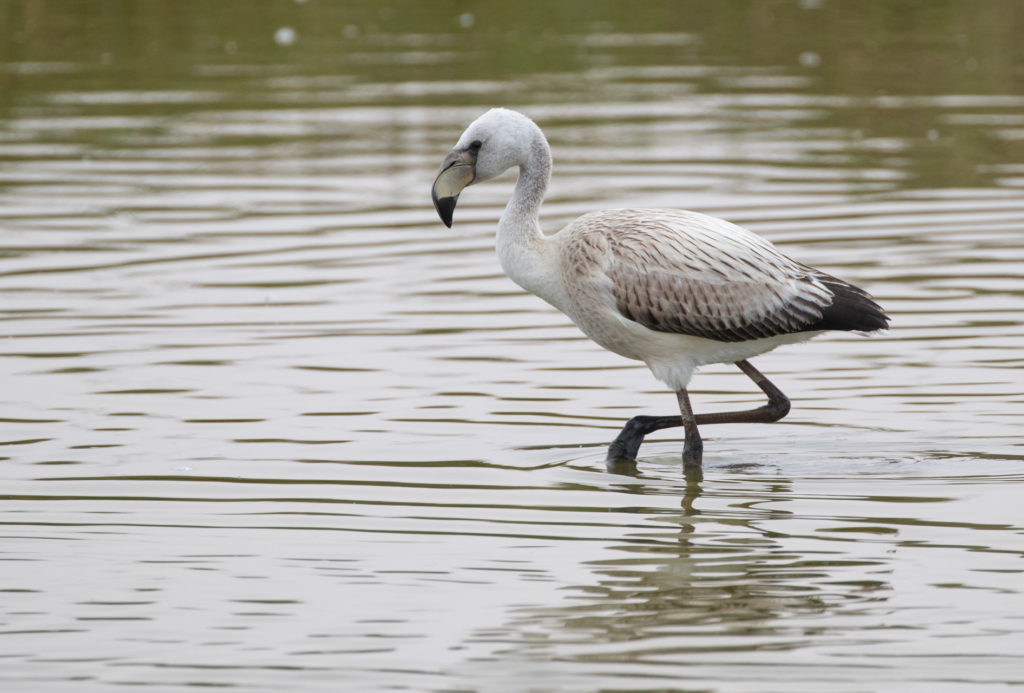
Puna Flamingo (Phoenicoparrus jamesi) / © Sebastián Saiter, Far South Exp
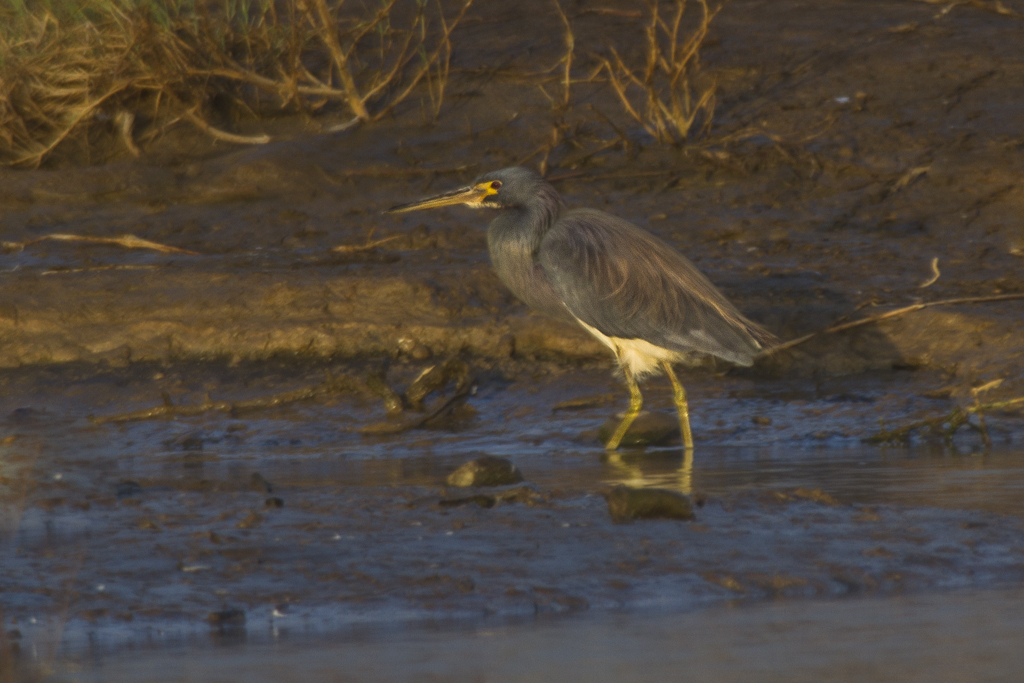
Tricoloured Heron (Egretta tricolor) / © Rodrigo Tapia, Far South Exp

Least Tern (Sternula antillarum) / © Rodrigo Tapia, Far South Exp
The following day we drove south to the Camarones Cove, where we found Peruvian Booby, Peruvian Pelican, Guanay and Red-legged Cormorants, Grey and Belcher´s Gulls and the Chilean endemic, Seaside Cinclodes. After that we drove inland along the Camarones Valley where we found Andean Swift, Oasis Hummingbird, the very local Pied-crested Tit-Tyrant, and a large flock of the only recently reported for Chile Raimondi’s Yellow Finch, another great find!
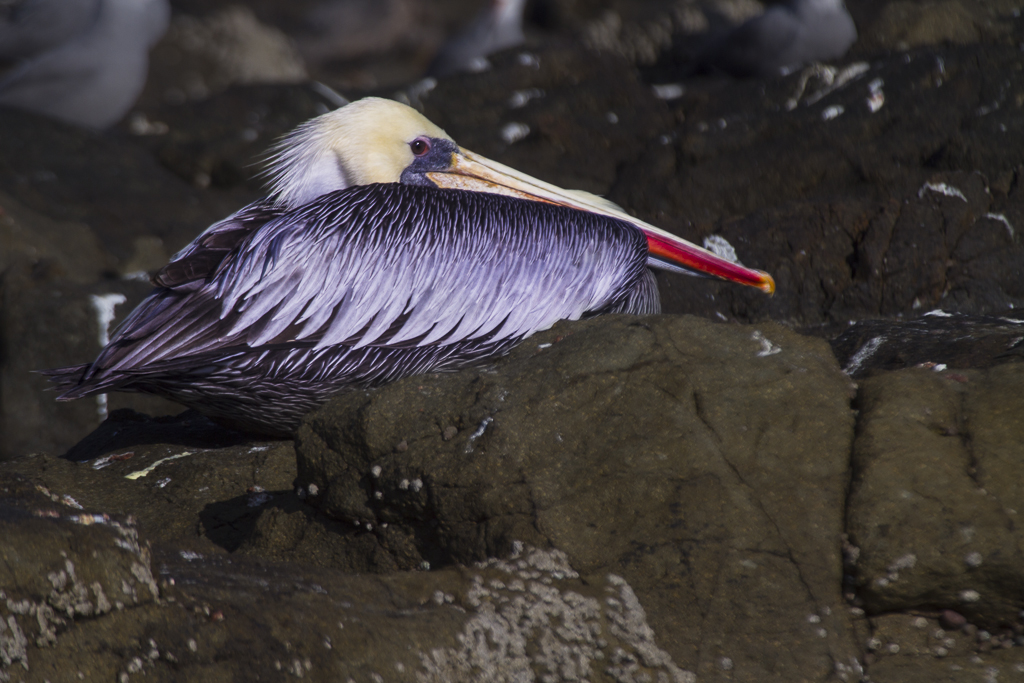
Peruvian Pelican (Pelecanus thagus) / © Rodrigo Tapia, Far South Exp

Grey Gull (Leucophaeus modestus) / © Rodrigo Tapia, Far South Exp
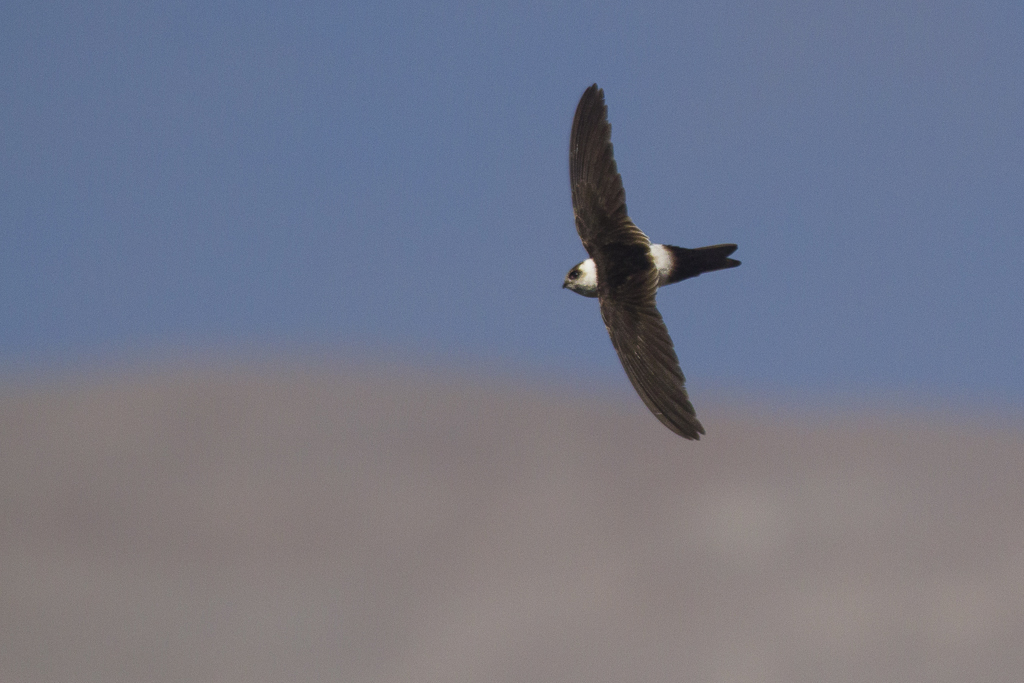
Andean Swift (Aeronautes andecolus) / © Rodrigo Tapia, Far South Exp
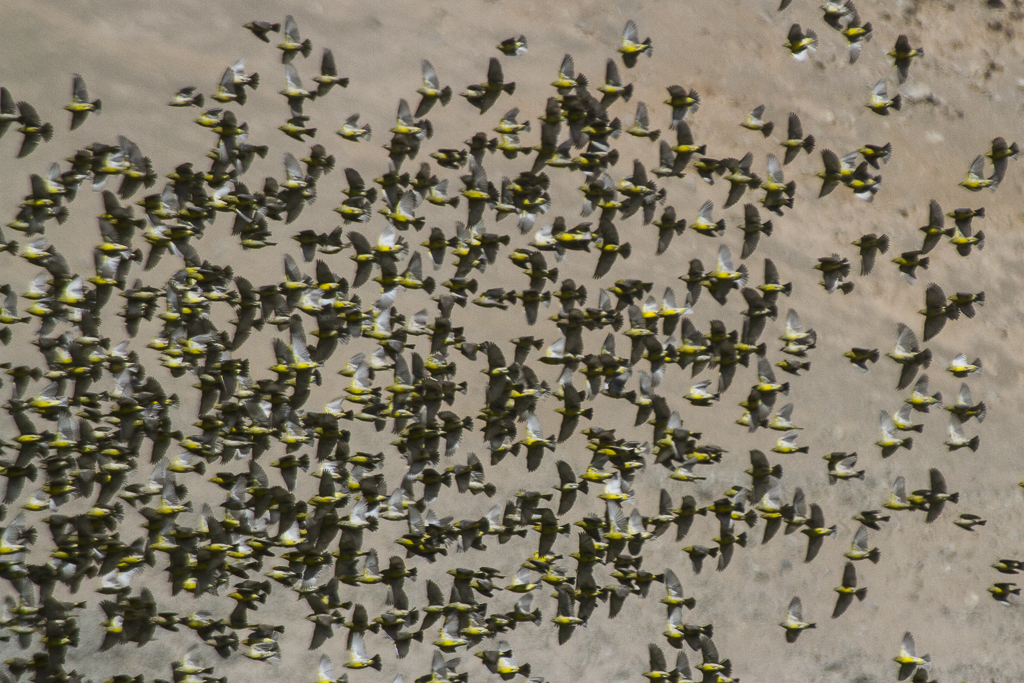
Raimondi’s Yellow Finch (Sicalis raimondii) / © Rodrigo Tapia, Far South Exp

Raimondi’s Yellow Finch (Sicalis raimondii) / © Rodrigo Tapia, Far South Exp
That afternoon we headed back north to bird the Chaca Valley, in search of one of the scarcest and smallest birds in Chile, the rare Chilean Woodstar. After a few hours we located a pair working one of the few flower patches around, their tiny figures against the looming barren cliffs a reflection of their fragility against a growing desertification and loss of native flora to crops like tomato and mango. This search for the Woodstar also produced another specialty of Northern Chile, the Tamarugo Conebill, plus race modesta of White-crested Elaenia and Cinereous Conebill.
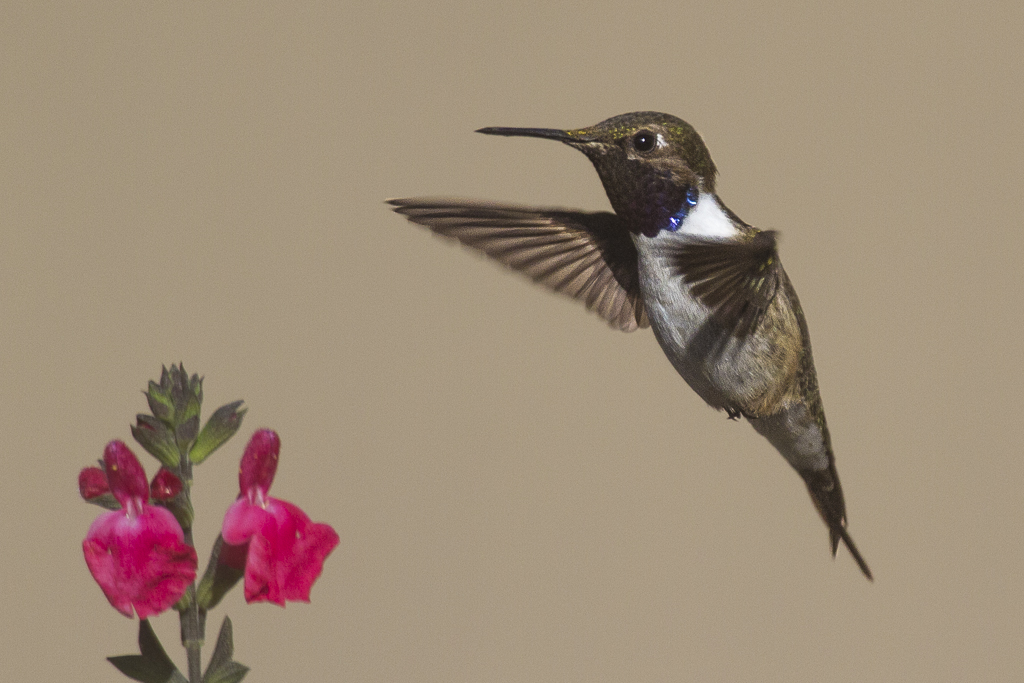
Chilean Woodstar (Eulidia yarrellii) / © Rodrigo Tapia, Far South Exp
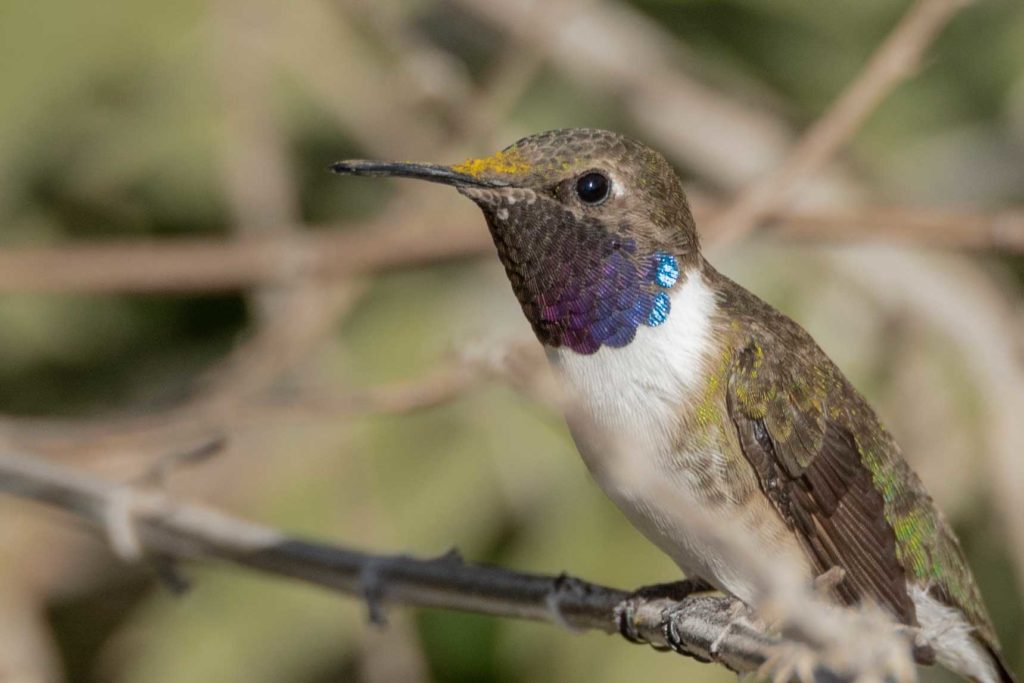
Chilean Woodstar (Eulidia yarrellii), male / © Jorge Valenzuela, Far South Exp
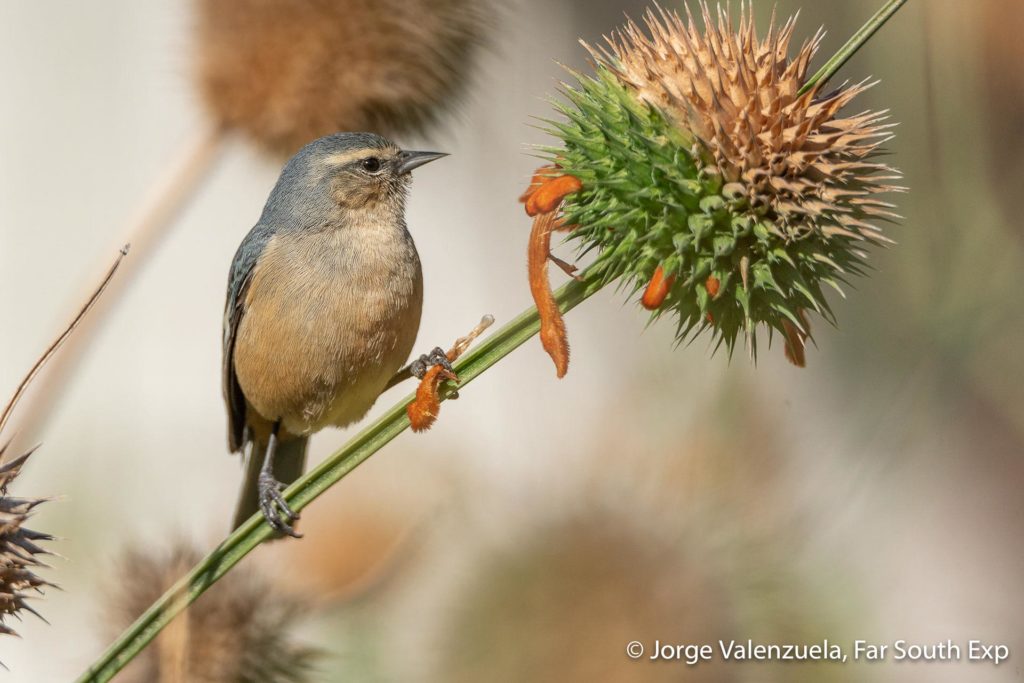
Cinereous Conebill (Conirostrum cinereum) / © Jorge Valenzuela, Far South Exp
Our third day finds us boarding an early morning West bound boat at the pier in the port of Arica, and sailing into the cold, productive waters of the Humboldt Current. This pelagic trip resulted in Northern Giant Petrel, Cape Petrel, White-chinned Petrel, Sooty Shearwater, Peruvian Diving Petrel and Elliot’s Storm Petrel, plus the endangered Humboldt Penguin, Peruvian and Blue-footed Boobies, Peruvian Pelican, Red-legged Cormorant, Chilean Skua, Kelp, Belcher’s, Andean and Grey Gulls, Inca Tern and a little group of 4 or 5 Peruvian Tern, another very local and scarce seabird.
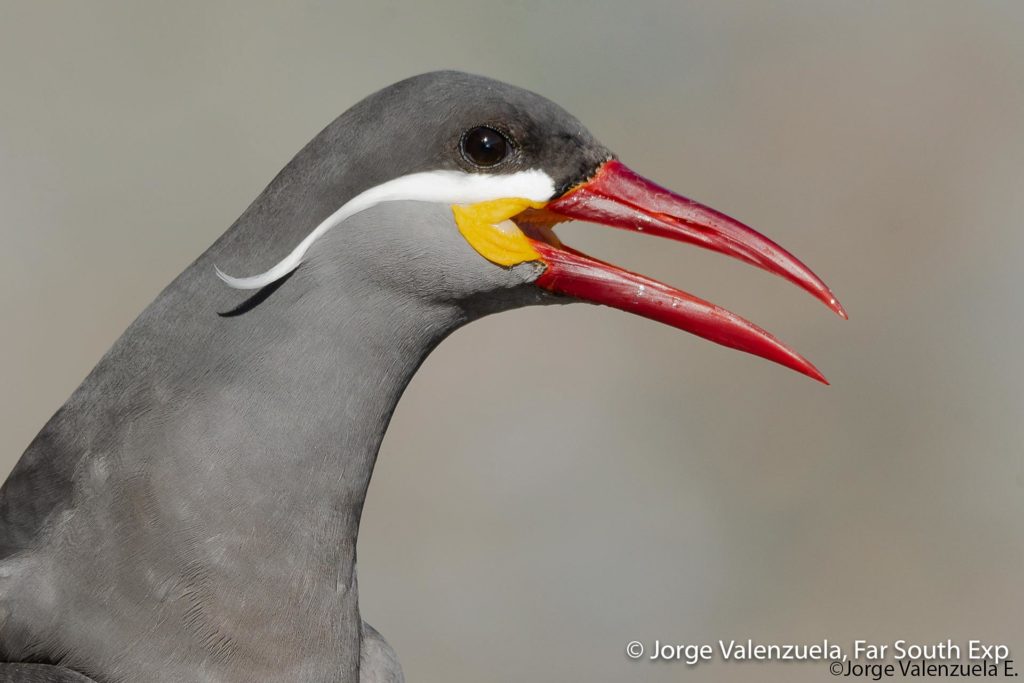
Inca Tern (Larosterna inca) / © Jorge Valenzuela, Far South Exp
In the afternoon, and once back to land, we went up the Azapa Valley to find Peruvian Sheartail and Oasis Hummingbird before starting our inland drive up the cliffs and valleys of the steep coast and then across the absolute desert, where the only sight to see is barren hills, rocks and scattered cacti all around. But even this harsh rocky world is home to a few specialist birds, and not surprisingly, we found Spot-winged Pigeon, Dark-winged Canastero, Straight-billed Earthcreeper and Hooded Siskin before continuing on our drive up to the 3,500m mark to reach the little Andean village of Putre, our headquarters for the following 4 days. We arrived there at dusk and it was dark by the time we got to our hotel, but still managed to get Band-winged Nightjar on the drive.
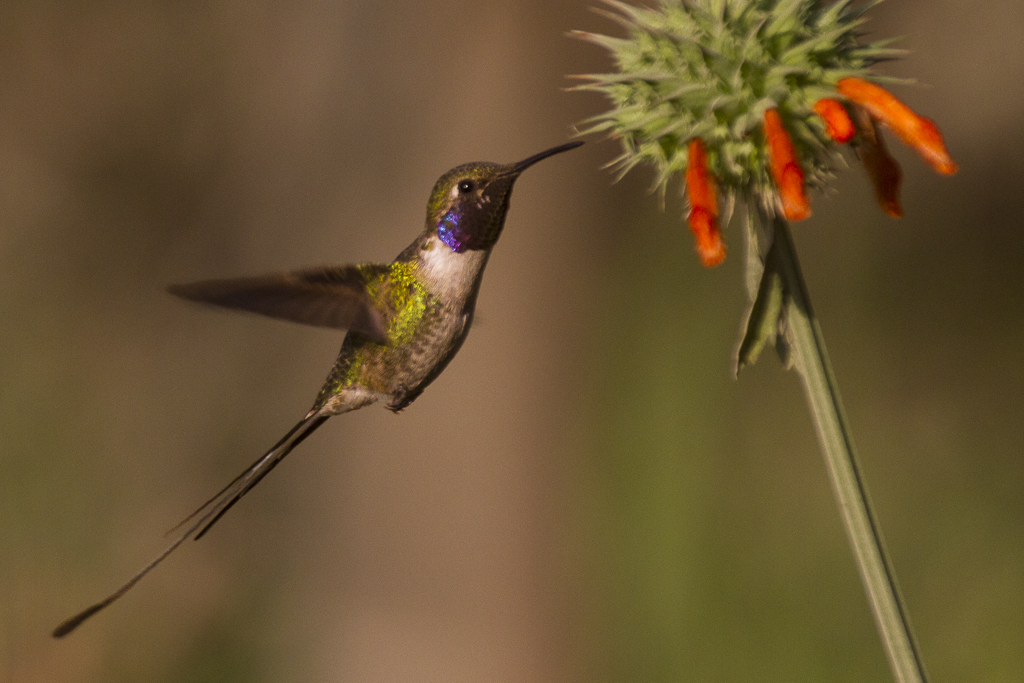
Peruvian Sheartail (Thaumastura cora) / © Rodrigo Tapia, Far South Exp
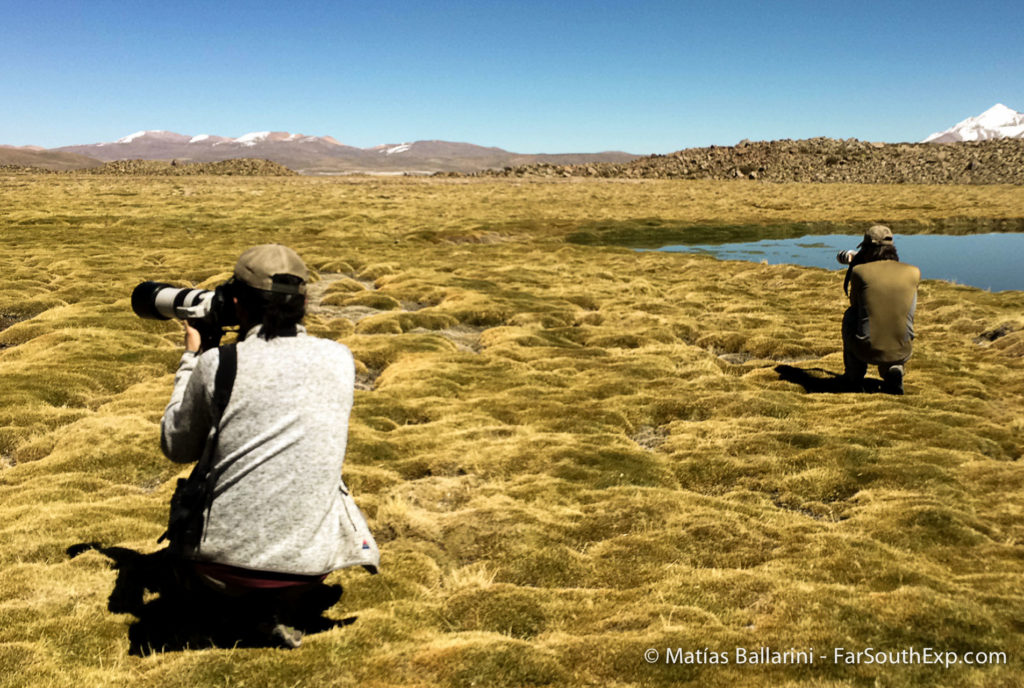
Parinacota / © Matías Ballarini, Far South Exp
Early next morning we took a road up from the village that took us to the Polylepis tree stands, where we got Andean Ibis, Black-throated Flowerpiercer, Puna Hillstar, D’Orbignyi’s chat-Tyrant, Canyon Canastero, Streaked Tit-Spinetail, race chiguanco of Chiguanco Thrush and Greenish Yellow Finch, and we found Ornate Tinamou, Ash-breasted Sierra Finch and lots of Mourning Sierra Finch in beautiful, fresh alternate plumage along the way.
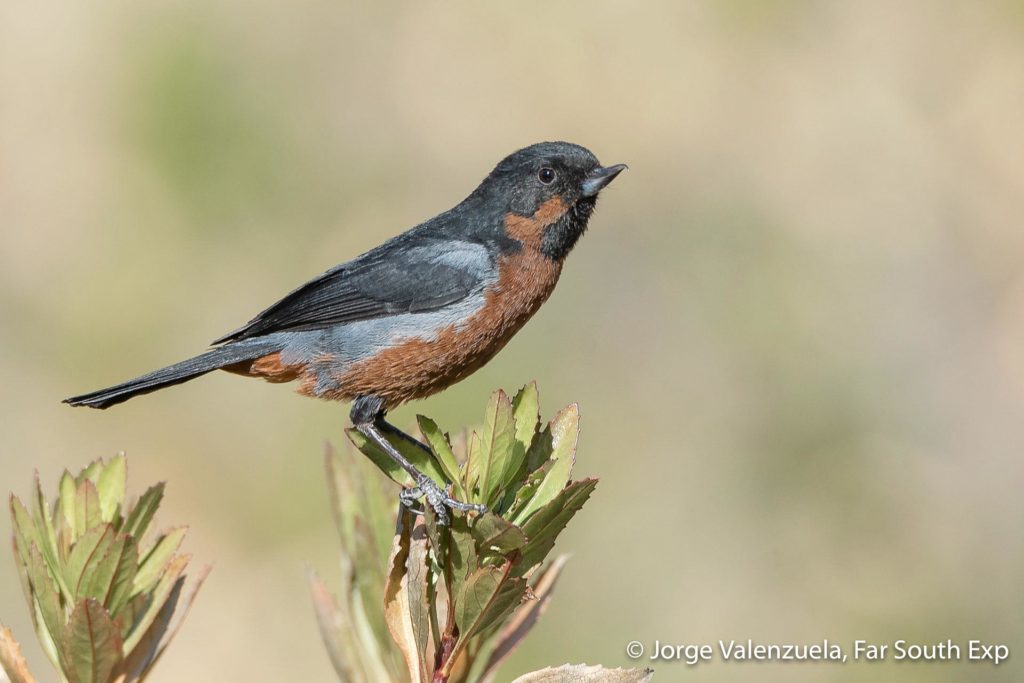
Black-throated Flowerpiercer (Diglossa brunneiventris) / © Jorge Valenzuela, Far South Exp
On the following day we drove up to a beautiful Andean bog with a cover of cushion plants and short, hard grasses and alkaline springs where we found some true gems of the high Andes such as the fabled Diademed Sandpiper-Plover of which we found a nesting pair, both White-winged and Cream-winged Cinclodes, White-fronted Ground Tyrant and White-throated Sierra Finch, and some quite obliging Vizcachas, the plump, rabbit-like rodents that live in the rock caves of the ravine and come down to the bog to graze and drink water.
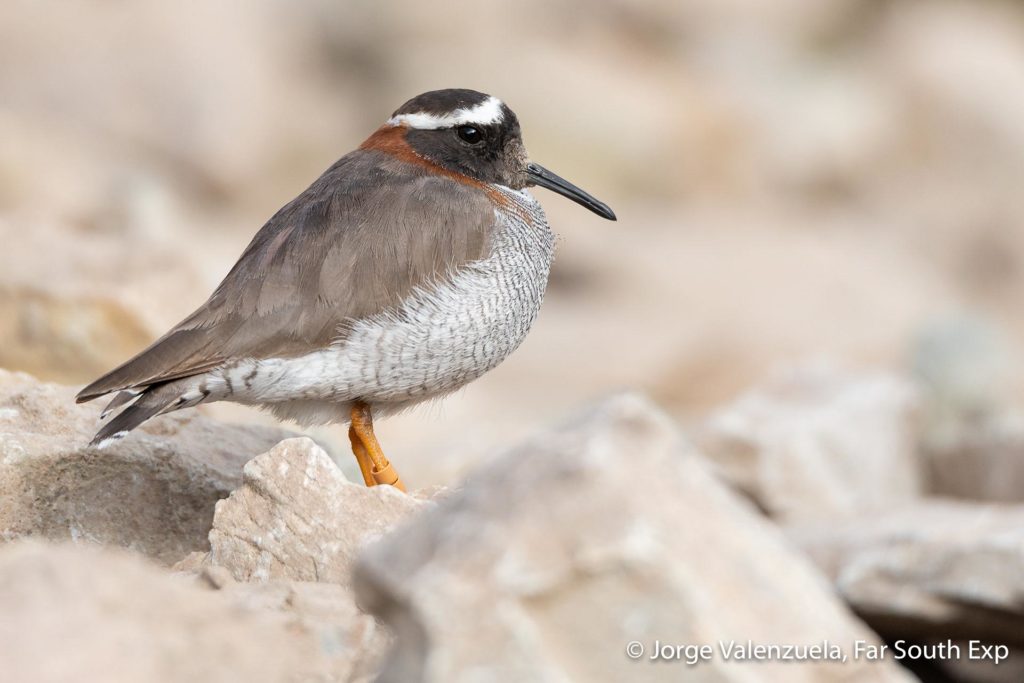
Diademed Sandpiper-Plover (Phegornis mitchellii) / © Jorge Valenzuela, Far South Exp
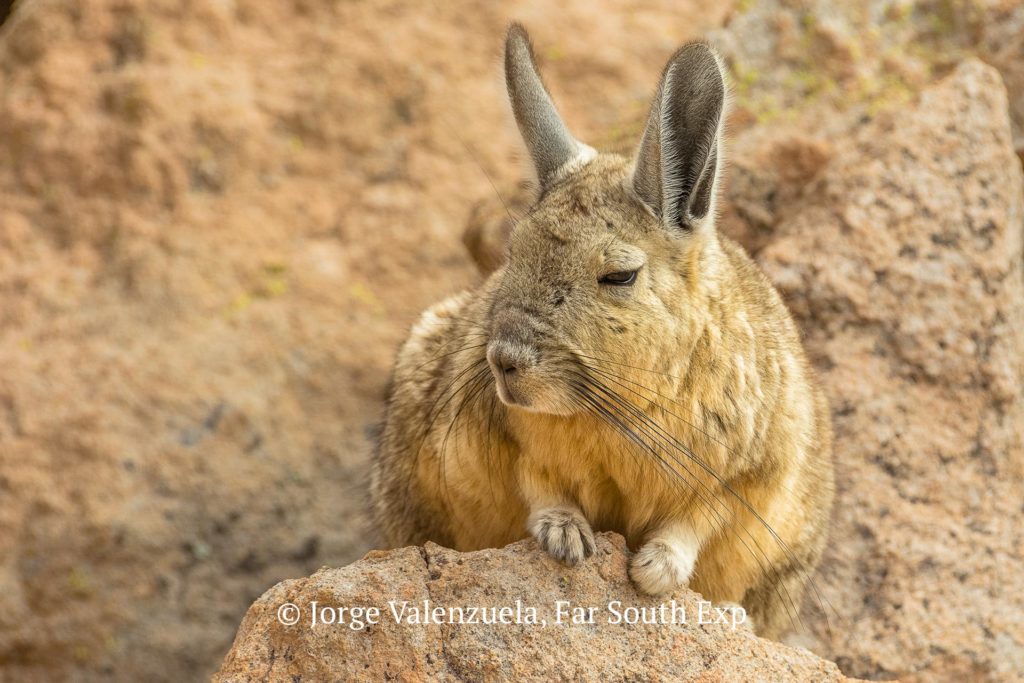
Mountain Viscacha (Lagidium viscacia cuvieri) / © Jorge Valenzuela, Far South Exp
We then continued moving upwards well above the 4,000m to reach the vast bogs and pools of Parinacota, where we found Giant Coot, Andean Flicker, Puna Ibis, Andean Goose, the oxyptera race of Yellow-billed Teal, race intermedia of Black-billed Shrike-Tyrant, Andean Swallow and White-winged Diuca Finch, before moving to lake Chungará where we found Giant and Andean Coots, Puna Teal, Chilean Flamingo, White-tufted Grebe and race juninensis of Silvery Grebe, Wilson’s Phalarope, Puna Plover, Andean Gull, Puna Miner, Spot-billed Ground Tyrant and Black-hooded Sierra Finch among others, plus a few wild herds of Vicuña, the northern Andean relative to Guanaco and camels, and even a few of the rare Taruca or Andean Deer grazing in the slopes of the hills along the road back to Putre.
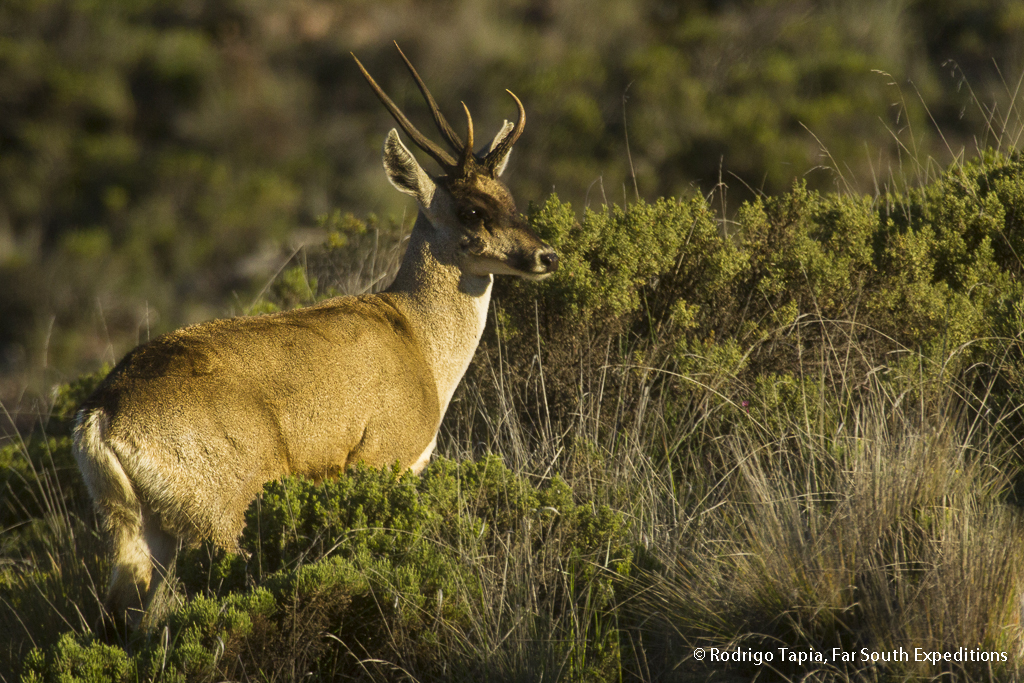
Andean Deer (Hippocamelus antisensis) / © Rodrigo Tapia, Far South Exp

Andean Goose (Oressochen melanopterus) / © Sebastián Saiter, Far South Exp
Next day we birded the immediate surroundings of Putre, finding Puna Hawk, Spot-winged Pigeon, Bare-faced Ground Dove, Puna Hillstar, both White-throated and Buff-breasted Earthcreepers, White-browed Chat-Tyrant, Blue and Yellow Tanager, Band-tailed Seedeater and Yellow-billed Tit-Tyrant.
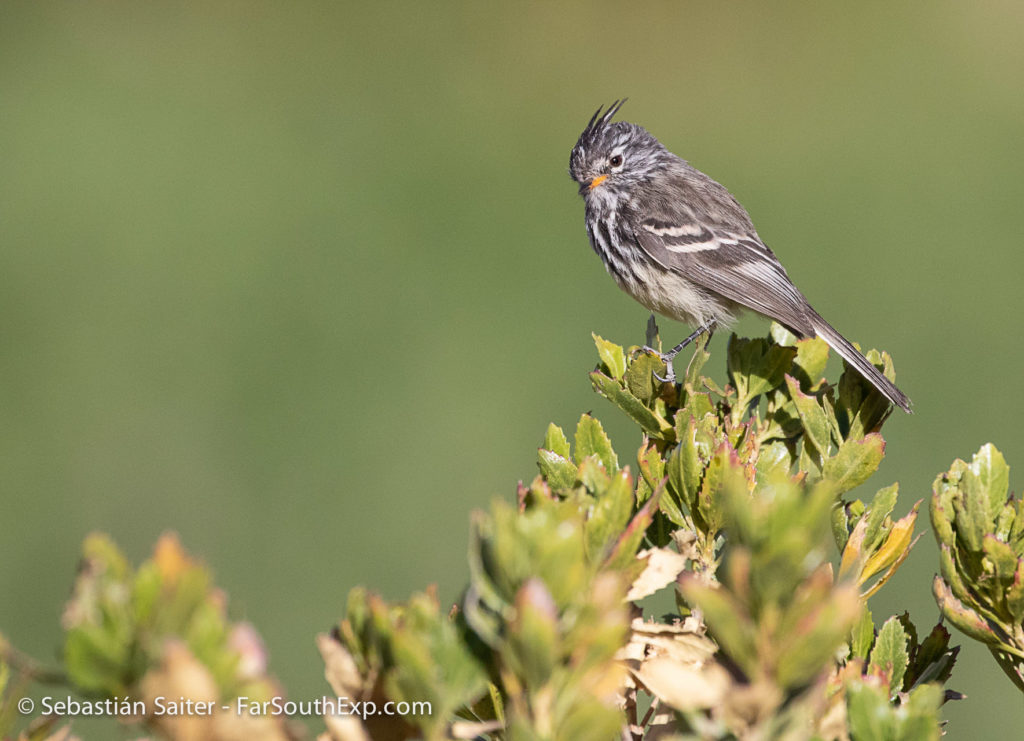
Yellow-billed Tit-Tyrant (Anairetes flavirostris) / © Sebastián Saiter, Far South Exp
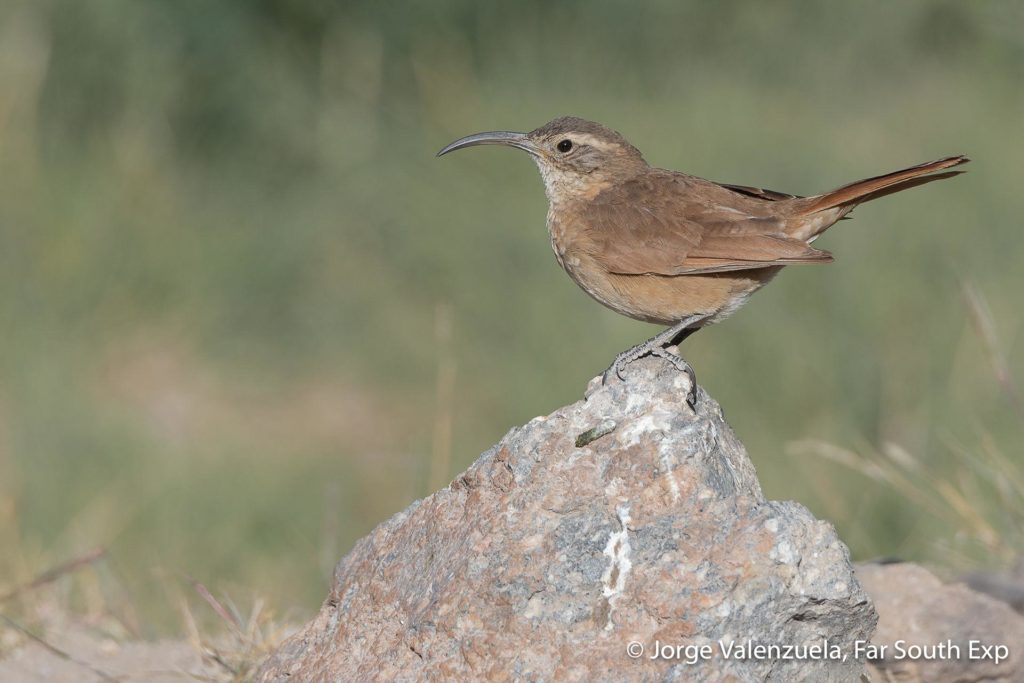
White-throated Earthcreeper (Upucerthia albigula) / © Jorge Valenzuela, Far South Exp
After lunch we drove back to Arica, where we arrived in the evening, in time to get some rest before boarding a very early morning flight back to Santiago, tired after some intense and sometimes physically challenging but very rewarding high-altitude birding, but very happy and with plenty of top-class records and the memories of the imposing scenery of the Andes and the Atacama in our minds.

Lauca NP / © Matías Ballarini, Far South Exp

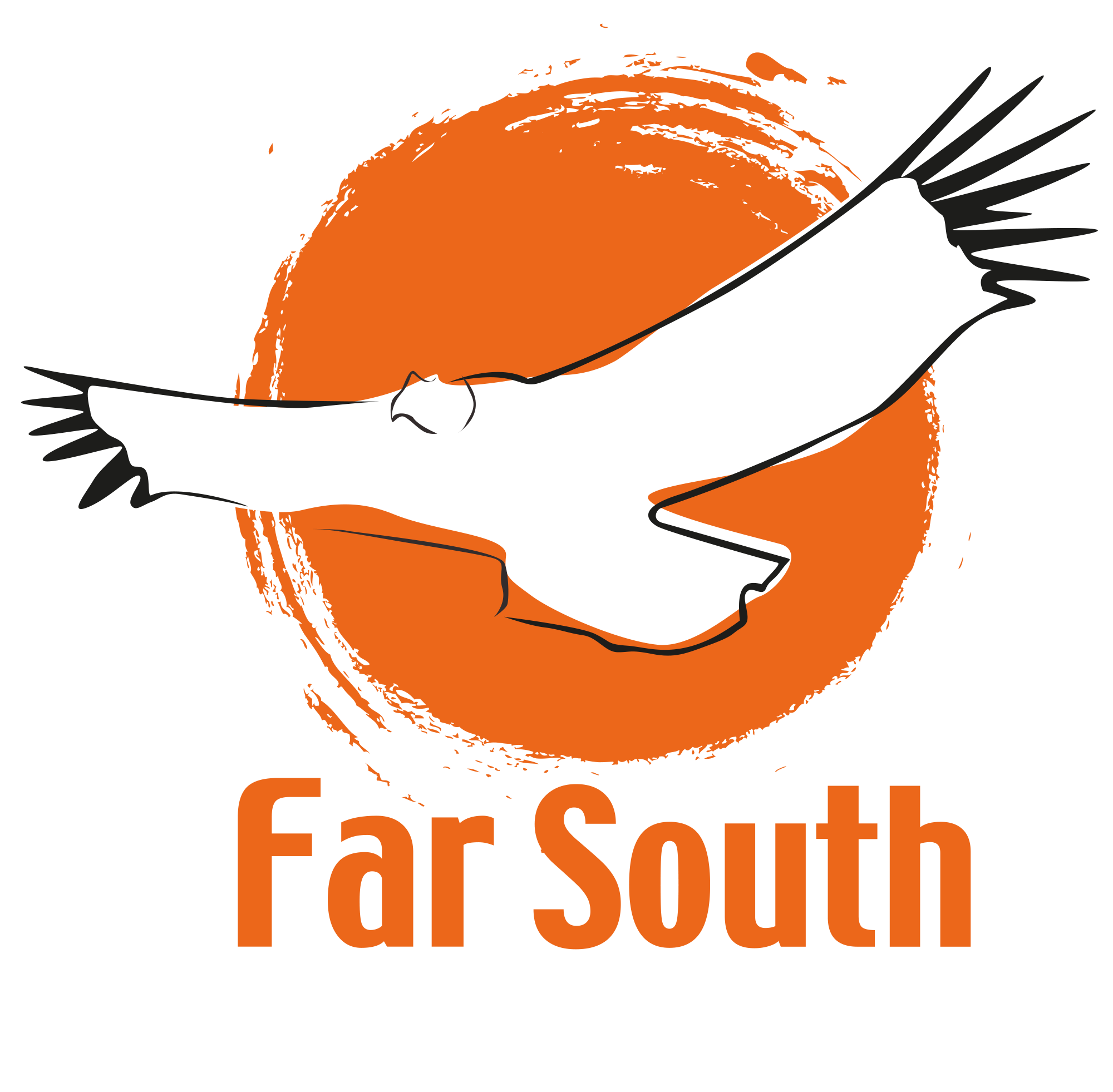
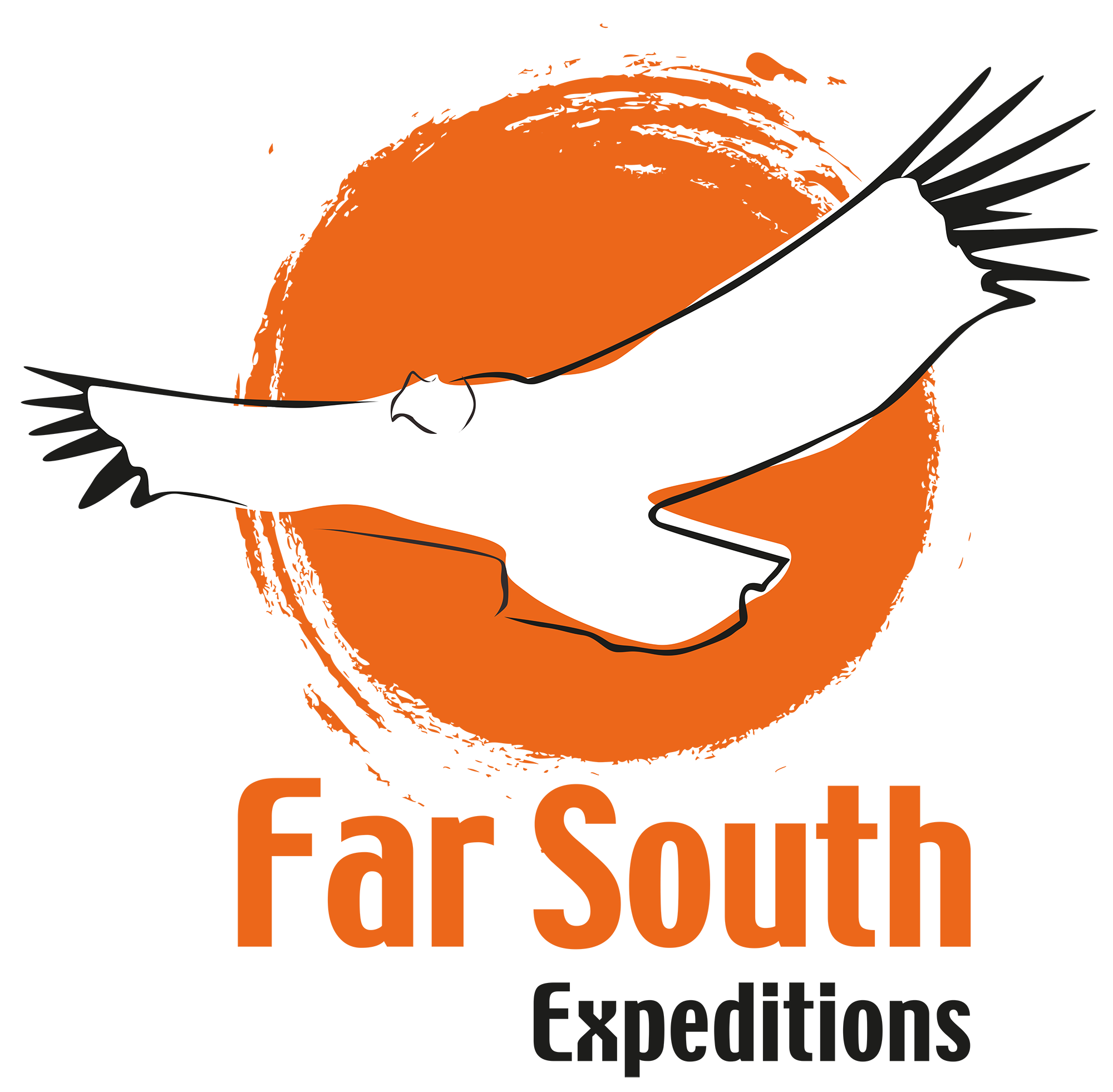
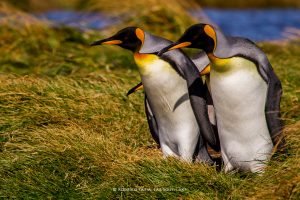
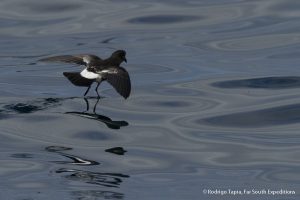


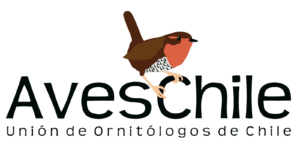

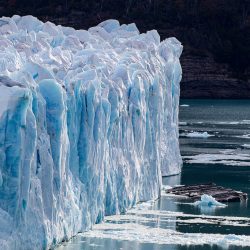




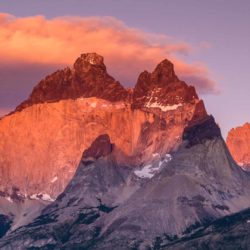
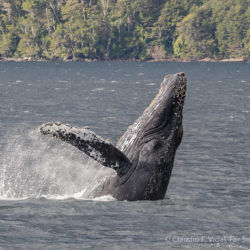

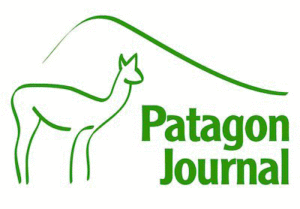
Leave a Reply
Your email is safe with us.